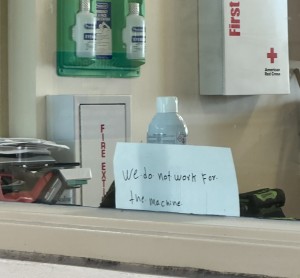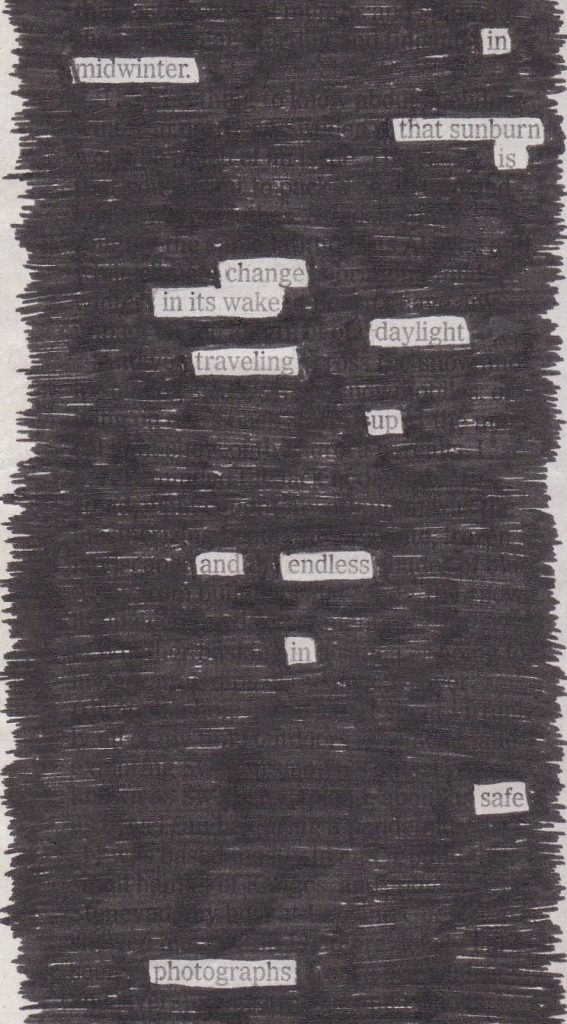As a printmaker and book artist with keen observation, I often draw inspiration from the world around me in the form of found text and images. Ever since childhood I’ve loved to collage, cutting up my teen magazines to paper my bedroom walls with photos and catchphrases. In college, when I began to make my own zines, collage was an accessible way for me to incorporate images along with my writing, despite my self-described subpar illustration skills.

Antique printer’s blocks, or “vintage clip art” as I like to call them, often accompany wood type words in much of my letterpress work. Finding these blocks is a treasure hunt. I scour flea markets, antique stores, and ebay and etsy shops looking for the perfect one for the project. In my work today, I build layers through cuttings and clippings from various media including test prints and type proofs, repurposing them into new forms.

Other times, my inspiration is found through non-printed media, like overhead conversations, street signs, or other borrowed text, which I reframe and transform. For my work in the upcoming Emerging Artists Exhibition, I took inspiration from a handwritten sign posted at a Florida highway rest stop: “We do not work for the machines”, a phrase I found myself repeating in my head for days. I decided to follow this inspiration, and it led me to create a print series and mini artist book edition that I’ll be debuting on May 9th.

Artists have been using printed words and letters since the Cubist painters of the early 1910’s collaging newspapers and bottle labels into still-lifes to texture with these unique visual elements. Similarly, poets create erasure or blackout poetry from existing pages of texts, or a cento, a form that unites original lines from other writings that when arranged become an entirely new poem.

In the digital age, the endless reproducibility of images provides the capacity for new meanings each time it’s used. Seemingly valueless images or words from advertising billboards or the endless stream of online content can be manipulated into complex visual arrangements, their meanings transformed by the context the artist assigns to them. Those struggling with creative blocks, visual or literary, might reignite inspiration through found images and texts.




